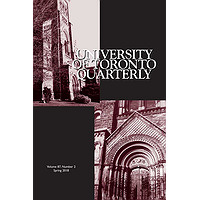Urbanisation and ageing: Ageism, inequality and the future of ‘Age-Friendly’ cities
Two major forces are set to shape the quality of daily life in the twenty- first century: population ageing and urbanization. Both have become major concerns for public policy, with significant implications for all types of communities. Cities are now regarded as central to economic development, attracting waves of migrants and supporting new knowledge-based industries. However, the extent to which the new “urban age” will produce what the World Health Organization have termed “age-friendly” cities and communities, creating opportunities for older people as well as strengthening ties across different age and social groups, remains uncertain. This article examines the relationship between ageing and urbanization through the application of the concept of ageism. It argues that urban development, especially that operating over the course of the 2000s and 2010s, has both consolidated and introduced new inequalities in the lives of older people. This is examined in three main ways: first, in the context of research on urbanization and the field of urban sociology in particular; second, through examining a range of examples where ageism may be said to operate within the urban environment; and third, outlining the basis for promoting an “anti-ageist urbanism” focused upon challenging inequality and spatial injustice.


Leave a Reply